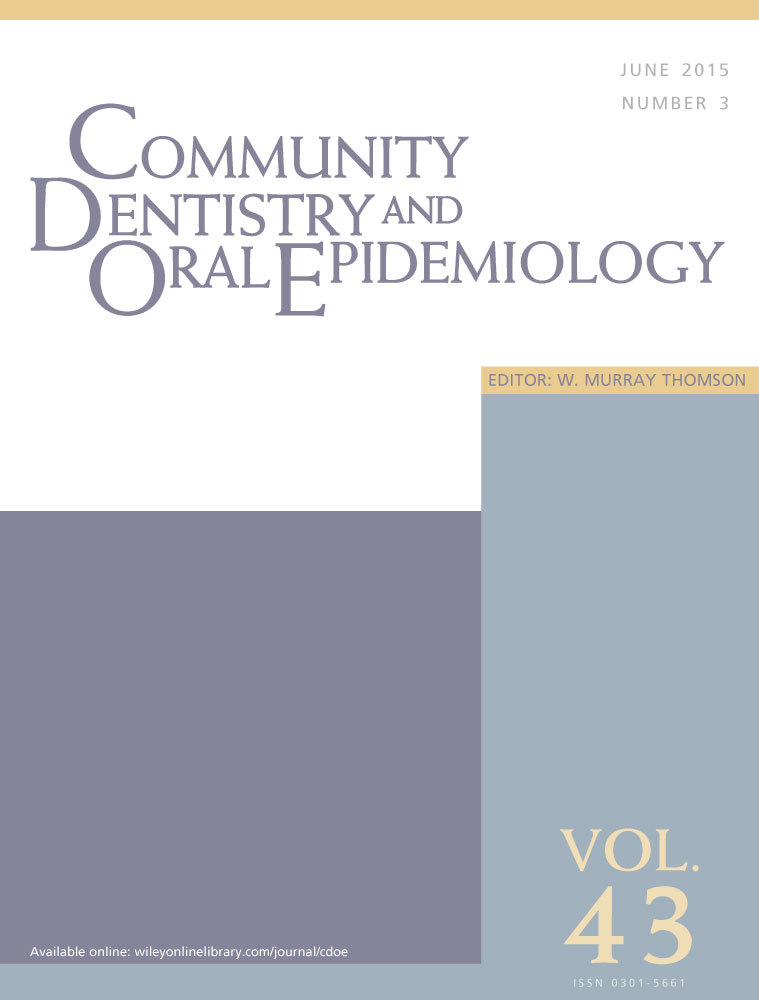Exfoliation rates of primary molars submitted to three treatment protocols after 3.5 years
Abstract
Objective
The aim of the study was to evaluate the exfoliation pattern of primary molars treated according to three treatment protocols. The hypothesis tested was that there is no difference in the exfoliation pattern of primary molars treated according to conventional restorative treatment using amalgam (CRT), atraumatic restorative treatment using high-viscosity glass-ionomer (ART), and ultraconservative treatment (UCT). The latter consisted of restoring small cavities with ART and cleaning medium/large nonrestored cavities daily with toothpaste/toothbrush under supervision.
Methods
A sample of 302 children aged 6–7 years from a suburban area of Brasilia was followed up for 3.5 years. The numbers of treated molars were 341 (CRT), 244 (ART), and 275 (UCT). Exfoliation rates were obtained using the PHREG procedure. Differences between the three treatment protocol groups were tested using the Wald test.
Results
After 3.5 years, there was no difference over the exfoliation rates of all primary molars as 51.0% (CRT), 48.7% (ART), and 48.1% (UCT) had exfoliated at the overall period (P = 0.37). Teeth with multiple-surfaces treatment had exfoliated in a higher proportion than teeth with single-surface treatments for all the three treatment groups (P = 0.04).
Conclusion
The three treatment protocols led to similar exfoliation patterns of all primary molars after 3.5 years.




